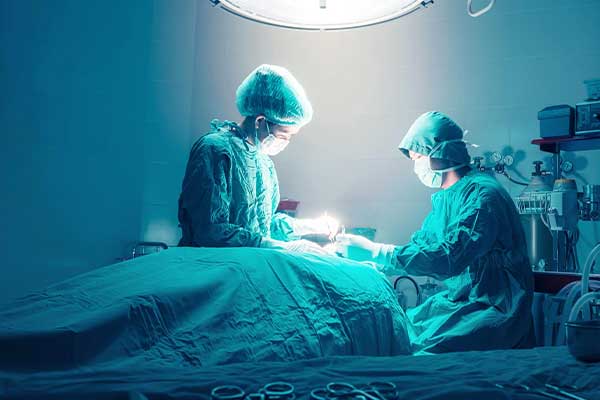Lung Surgery

Types of Lung Surgery
Lobectomy: This is the most common type of lung surgery for lung cancer. It involves the removal of one of the lobes of the lung. Each lung has multiple lobes (three in the right lung and two in the left lung), and removing a lobe can help eliminate localized disease.
Pneumonectomy: This procedure involves the removal of an entire lung. It is typically performed when the cancer is located in the central part of the lung and cannot be removed with a lobectomy.
Segmentectomy or Wedge Resection: These procedures involve removing a small part of the lung. They are less extensive than a lobectomy and are usually performed when the cancer is small and confined to one area.
Sleeve Resection: This surgery involves removing a part of the bronchus (the main airway) and reattaching the healthy ends. It’s used when the tumor is located in the central part of the lung but hasn’t spread widely.
Video-Assisted Thoracoscopic Surgery (VATS): A minimally invasive surgery that uses a tiny camera and special instruments inserted through small incisions in the chest. It can be used for diagnosing and treating lung problems and is associated with faster recovery times and less pain.
Robotic-Assisted Thoracic Surgery: Similar to VATS but uses robotic technology for more precise movements. It allows for greater dexterity and control during the procedure.
Indications for Lung Surgery
Lung surgery may be indicated for various conditions, including:
- Lung Cancer: The most common reason for lung surgery. Surgical removal of the tumor is often the best chance for a cure, especially in the early stages.
- Benign Lung Tumors: Non-cancerous growths that may still need removal if they cause symptoms or have the potential to become malignant.
- Lung Infections: Such as abscesses or severe tuberculosis that do not respond to medical treatment.
- Chronic Obstructive Pulmonary Disease (COPD): In cases where damaged lung tissue needs to be removed to improve breathing.
- Trauma: Repair of lung tissue damaged by injury.
Risks and Complications
Like any major surgery, lung surgery carries risks, including:
- Infection: Post-surgical infections can occur, though they are managed with antibiotics.
- Bleeding: Significant bleeding during or after surgery may require blood transfusions or additional procedures.
- Respiratory Complications: Such as pneumonia or difficulty breathing post-surgery.
- Prolonged Air Leak: Air leaking from the lung into the chest cavity can persist longer than expected.
- Pain: Post-operative pain is common but can be managed with medications.
Recovery and Aftercare
Recovery from lung surgery depends on the type and extent of the surgery performed, as well as the patient’s overall health. General aspects of recovery include:
- Hospital Stay: Patients typically stay in the hospital for several days to a week.
- Breathing Exercises: To help expand the lung and prevent complications like pneumonia.
- Pain Management: Medications to control pain and discomfort.
- Follow-Up: Regular follow-up visits to monitor recovery and detect any potential complications early.
- Lifestyle Changes: Quitting smoking and adopting a healthier lifestyle to aid recovery and improve long-term lung health.
